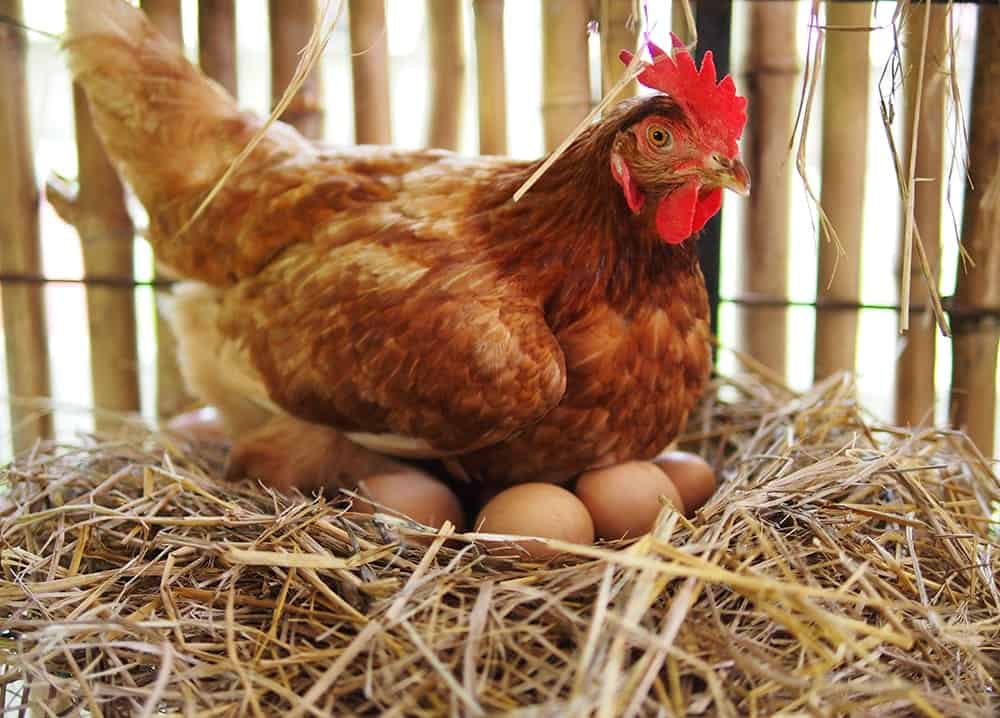Whether you’re looking for an egg-laying monster that can average nearly an egg a day over a year, or something that will lay pastel blue eggs, there is a chicken breed for you. Choosing the right breed is only part of the battle. Your chickens need to be happy and stress-free and have the right conditions to improve the odds of them becoming abundant layers.

The 15 Best Egg Laying Chicken Breeds
As well as following the brief guide above, and feeding to encourage laying, you can choose one of the following chicken breeds. We’ve included those that lay the greatest number, the largest eggs, and some of the most unique designs so you can be sure of getting the eggs you’re looking for.
1. Golden Comet Chicken
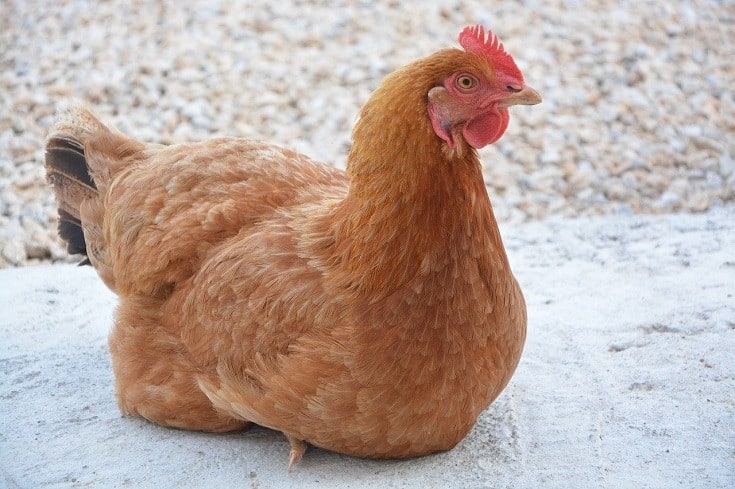
| Yield | 280/year |
| Eggs | Medium, Brown |
| Character | Hardy |
The Golden Comet is a hybrid, but a hybrid worth mentioning specifically. They can lay as many as 280 eggs a year, which is around five a week. Hybrids have been bred for the purpose, which means that they have probably been bred to have a minimal appetite, to be hardy, and to lay a lot of eggs over a year. The Golden Comet is easy to look after and considered easy to get to lay.
2. Rhode Island Red Chicken
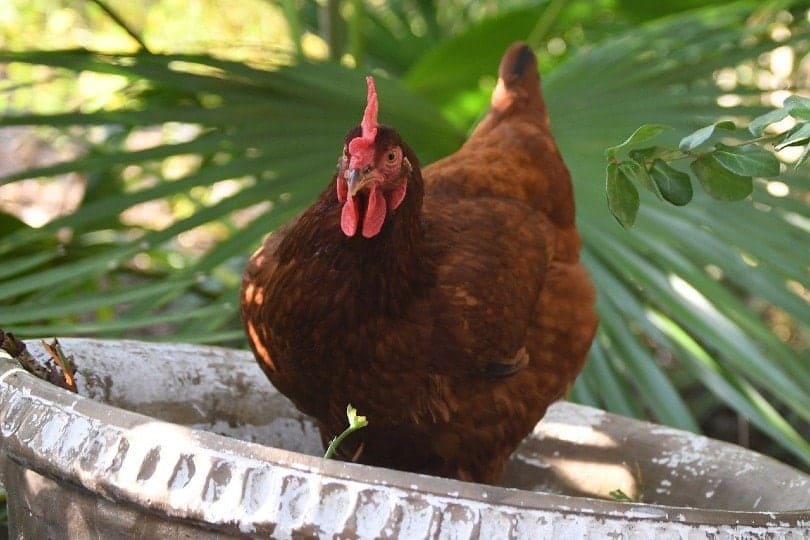
| Yield | 250/year |
| Eggs | Medium, Brown |
| Character | Friendly, Tough |
The Rhode Island Red is one of the most popular first breeds for egg lovers, and also for meat lovers, as they are a typical dual-purpose bird. They will produce around five eggs a week, are easy to care for, tend to be friendly, and their meat tastes good, too.
3. Leghorn Chicken
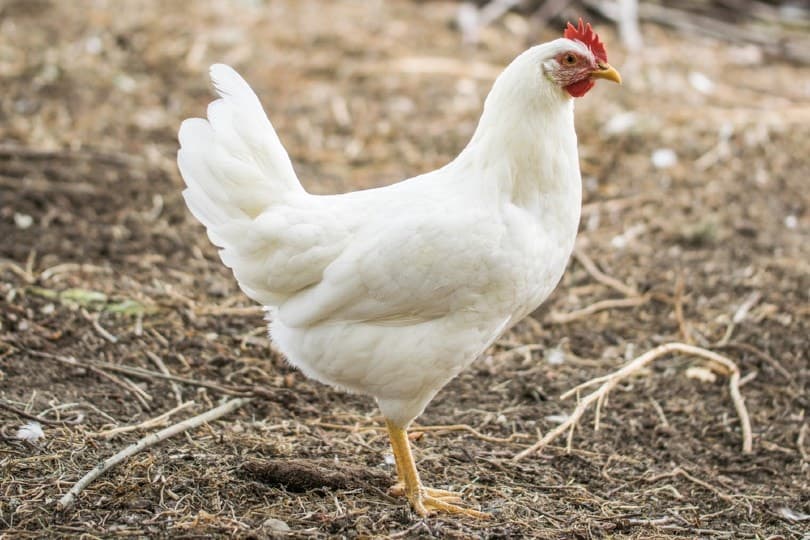
| Yield | 250/year |
| Eggs | Medium, White |
| Character | Shy, Independent |
The Leghorn is a good choice for beginners because they are easy to care for and will yield around 250 eggs a year. The Leghorn’s eggs are also jumbo-sized. They are also popular because they are an attractive chicken breed with white feathers and a substantial red comb on the top of their head. However, they can be hard to tame and they are shy so they may not make the best pet chicken.
4. Sussex Chickens
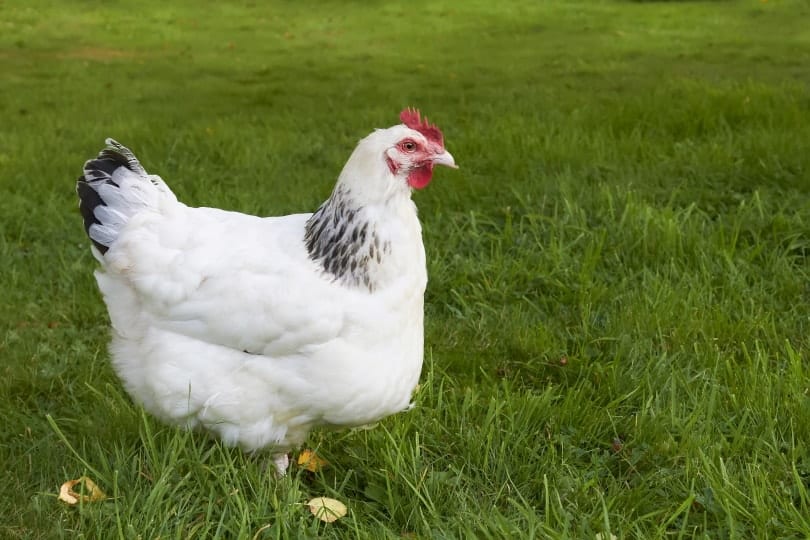
| Yield | 250/year |
| Eggs | Brown, White |
| Character | Tame |
The Sussex is not only a prolific egg layer, producing around 250 a year, but it is a dual-purpose breed that produces great-tasting meat, too. This breed comes in any of eight colors and it is a tame breed. You can encourage the Sussex to eat from your hand. It will make a good pet and it can roam freely around your garden without causing too much damage – a great choice for the novice.
5. Plymouth Rock Chicken
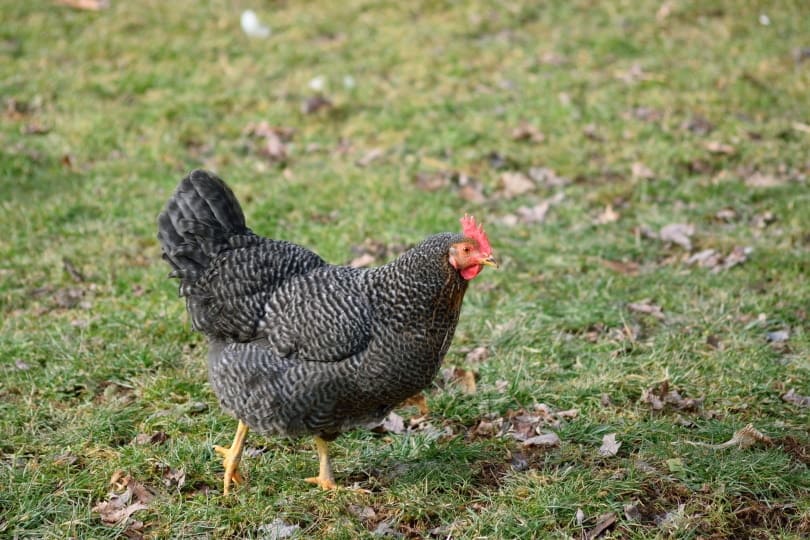
| Yield | 200/year |
| Eggs | Light Brown, Medium |
| Character | Very Friendly |
The Plymouth Rock, also known as the Barred Rock, is a large bird. The hen will lay, on average, every other day. This slightly less relentless pace can be a good starting point for the first-time owner, and the Plymouth Rock’s happy outlook and independent nature further cement its position as a good starter bird.
6. Ancona Chicken
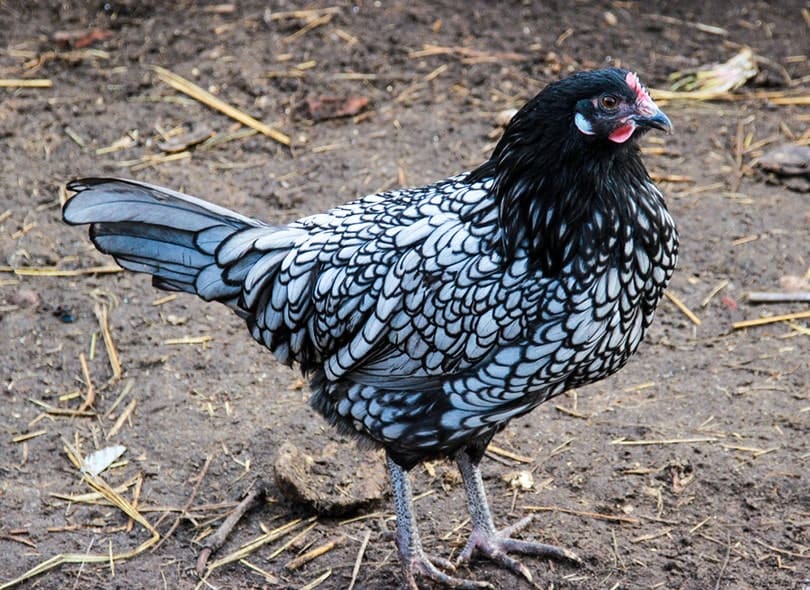
| Yield | 200/year |
| Eggs | White, Small |
| Character | Jumpy |
The Ancona is a fairly prolific layer, producing an average of 200 eggs a year. This bird, which was first bred in Italy but is now popular in the UK, is a good choice as a layer, but his nervous and jumpy nature means that the Ancona is not a good choice as a pet. It is known for escaping, too, so will need regular clipping of its flight wings.
7. Barnevelder Chickens
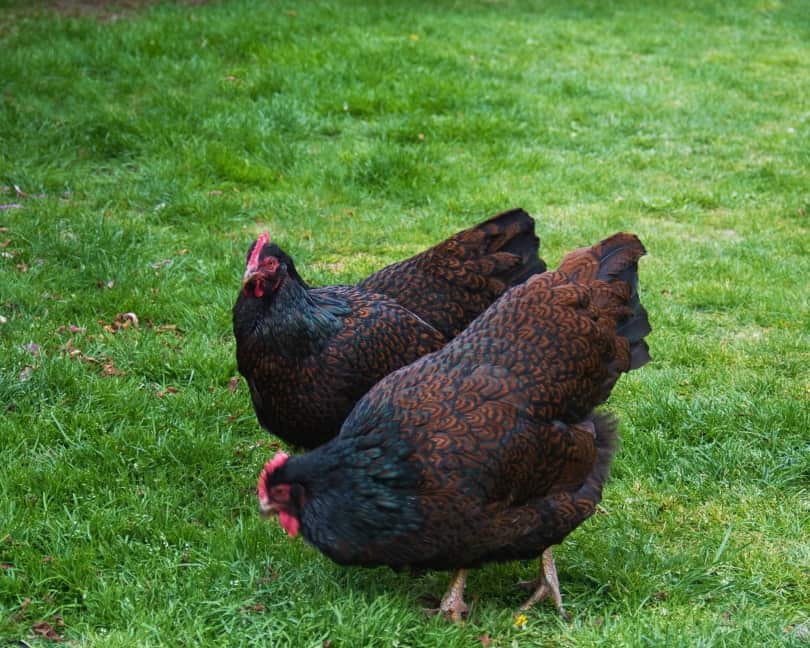
| Yield | 200/year |
| Eggs | Speckled, Small |
| Character | not great at flying |
Unlike the Ancona, the Barnevelder is not great at flying, which negates the need to have to clip feathers. The Barnevelder is a Dutch bird that was first created by crossing Dutch chickens with Asian stock. The Barnevelder is suitable for keeping in a garden pen and can make a good first chicken.
8. Hamburg Chicken

| Yield | 200/year |
| Eggs | White, Medium |
| Character | Aggressive |
Native to Germany, and aggressive when in a confined space, the Hamburg does have a good yield, producing around 200 eggs a year. It is also popular because of its striking looks, consisting of black dots on a white feather background.
9. Maran Chickens
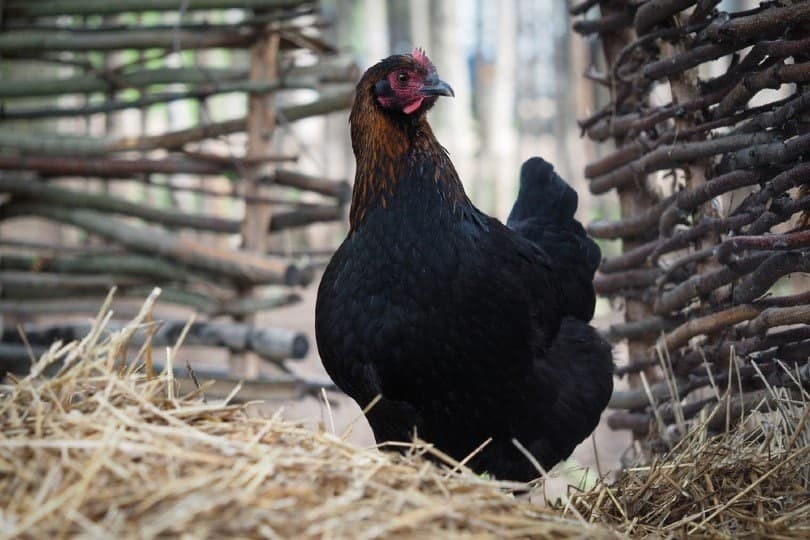
| Yield | 200/year |
| Eggs | Dark Brown, Medium |
| Character | Gentle |
Although Marans are known for being gentle chickens, they are not considered good pets because they are not easy to tame. They do make good first chickens, though, because they do not need a lot of room to roam.
10. Buff Orpington Chicken
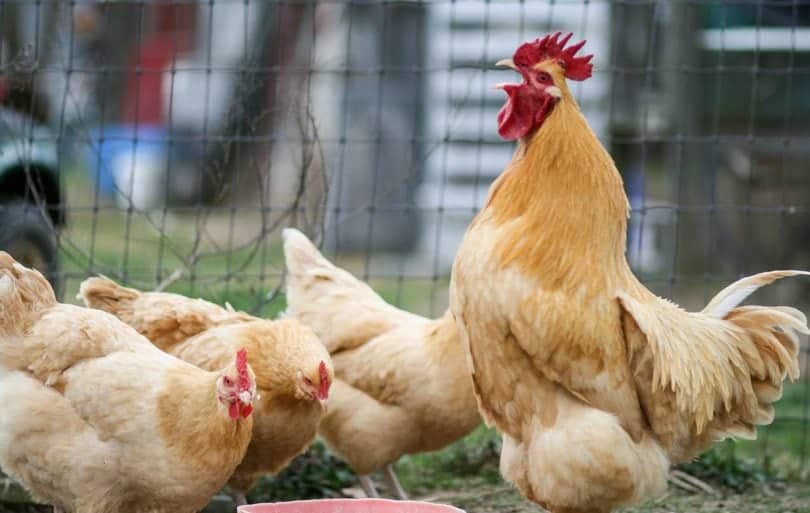
| Yield | 200/year |
| Eggs | Light Brown, Medium |
| Character | Friendly |
The Orpington, which is available in Buff or Black, makes a great pet chicken. They not only tolerate being petted but genuinely enjoy the attention. Orpington hens can get broody, which is useful if you want more chicks but can lead to illness and prevent laying during laying season. Despite the propensity for broodiness, the Buff Orpington is a good choice for novice owners.
11. Easter Egger

| Yield | 250/year |
| Eggs | Light Blue, Medium to Large |
| Character | Non-Aggressive |
The Easter Egger is another hybrid breed and justifies its inclusion as the second hybrid in our list not just by virtue of the volume of eggs it lays but also the quality of those eggs. The Easter Egger produces a lot of blue eggs a year, and they are a decent size. The bird itself is not aggressive and can be kept in the garden, but they may not want petting.
12. Minorca Chickens
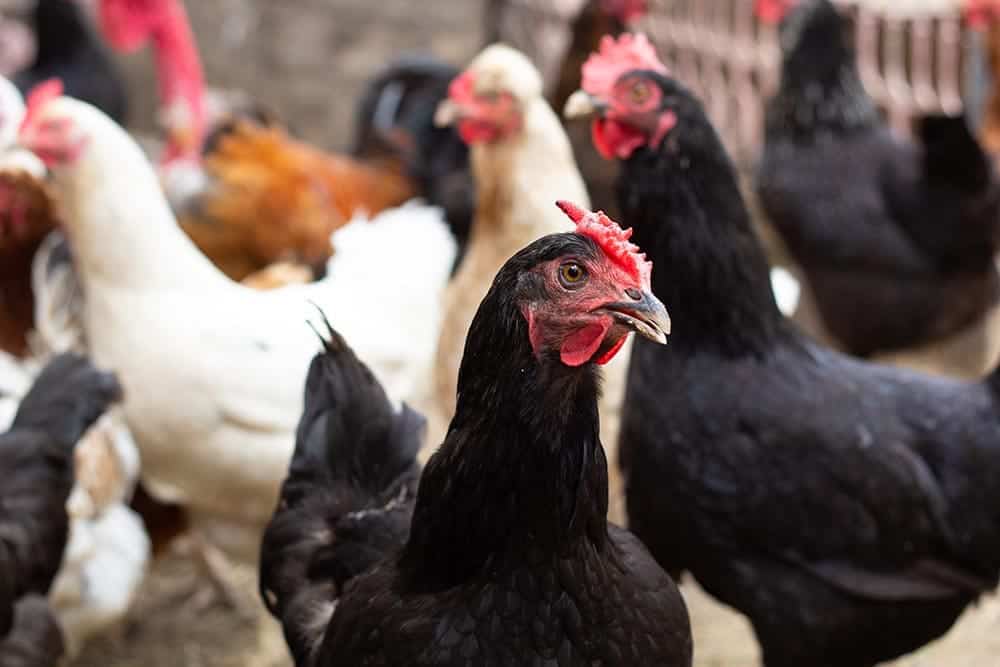
| Yield | 200/year |
| Eggs | White, Very Large |
| Character | Friendly |
The Minorca is proof that it isn’t just about quantity: quality matters, too. The Minorca produces a more than respectable 200 eggs a year, or one egg every 2 days, but they are very large eggs and they are an attractive white color. The Minorca is a friendly breed, too, which makes it a good choice for owners.
13. Lohmann Brown Chicken
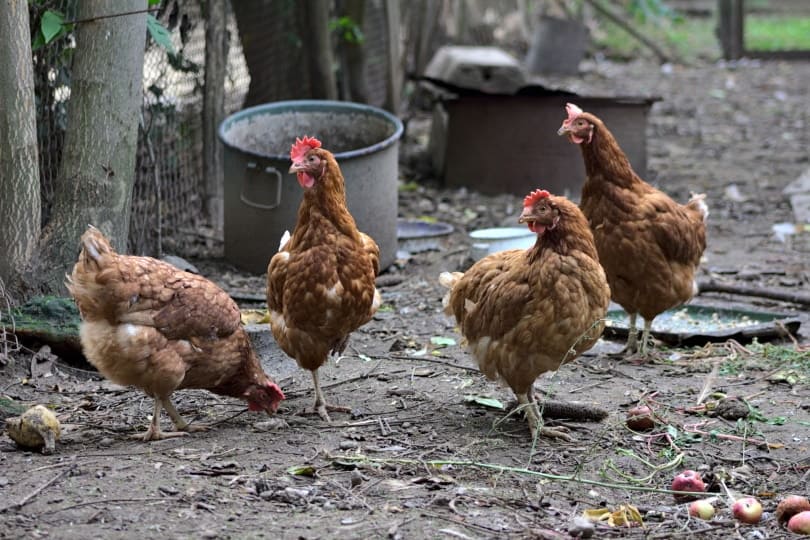
| Yield | 280/year |
| Eggs | Brown, Jumbo |
| Character | Friendly |
The Lohmann Brown is a very popular breed, although it is more popular in South Africa. Bred by a German genetics company, this breed will lay up to 280 very large and very brown eggs every year. They are also considered friendly and are suitable for living with other animals and around children.
14. Welsummer
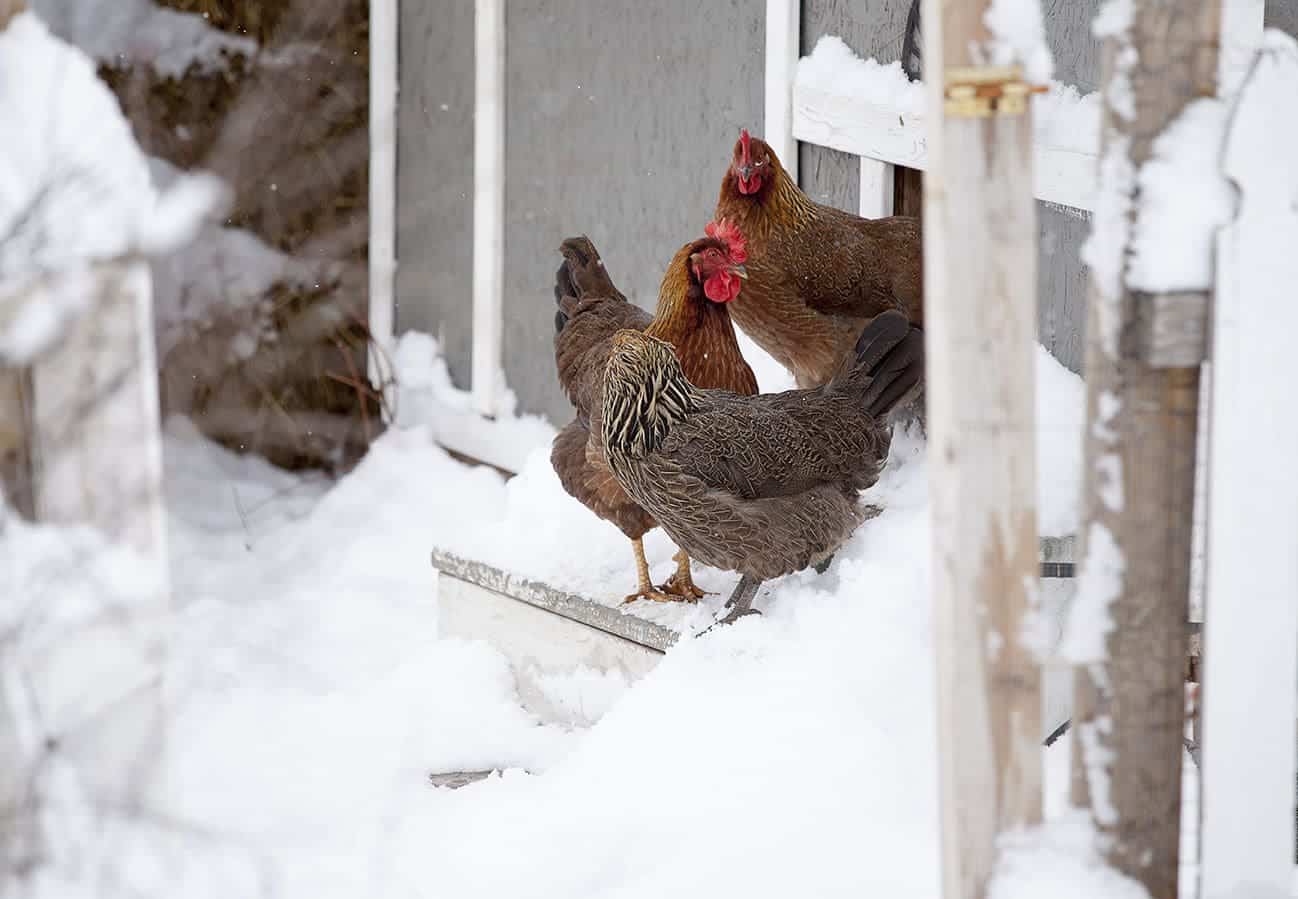
| Yield | 180/year |
| Eggs | Chocolate Brown |
| Character | Sweet Natured |
The Welsummer is a multipurpose chicken. It is good at foraging so is ideal for living outdoors or in pens. The hen’s eggs are a beautiful dark, chocolate-brown color, too, with even darker speckles. The breed can survive equally well in hot and cold climates and is considered an excellent choice of hen for the home.
15. Penedesenca Chicken
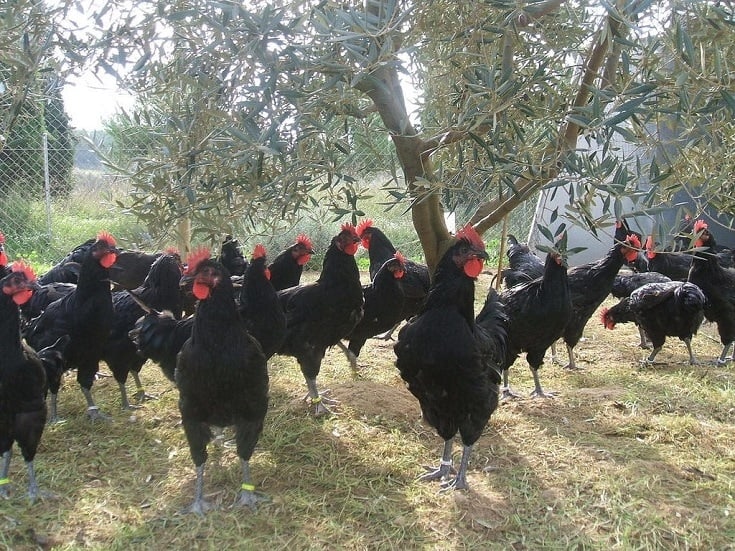
| Yield | 200/year |
| Eggs | Dark, Dark Red Brown |
| Character | Alert |
The Penedesenca is an alert and even cautious bird. She won’t be as loving as a lot of other pet breeds, but she will come to you with regular and patient encouragement. She will also lay up to 200 eggs a year, and the eggs are a stunning and natural dark red-brown color.
- Related read: Do Chickens Fart? (Causes & Considerations)

Provide the Best Laying Conditions
To ensure the best chances of your chickens laying ample eggs, you should ensure the following:
- Nest Boxes – On average, you need a nest box for every fourth laying bird. The boxes should be in a dark place that offers a little privacy and they should be a few inches off the ground. Clean the nest boxes and make sure they are secure and comfortable for your chickens.
- Collect Eggs – You should get into the habit of collecting eggs once or twice a day, depending on the laying rate. One or two eggs won’t put a hen off laying, but a box full of eggs will.
- Provide a Nest Egg – With that said, offering a nest egg in the nest box guides your hens to where they should be laying and convinces them that it is a good spot. Use a golf ball or buy a fake egg.
- Roosting Spots – Nest boxes should be used for laying, and not sleeping. Provide roosting spots so your birds don’t have to sleep in the nest box, putting them off laying there.
- Keep Them In – If you run out and open the roosting spot door too early, your hens won’t have had a chance to lay and may get side-tracked with other activities. Keep them locked up until late morning so they get a chance to lay their eggs.
- Let There Be Light – A lot of chickens will stop laying during winter, and they recognize the season by the fact that there is less daylight. Provide artificial light that mimics that of sunlight and you could persuade your hens to lay all year.
- You may also be interested in: White Rock Chicken

Conclusion
Exactly which breed would be best for you depends on more than your desire for egg quantity or appearance. You should consider how much room you can give to the hens, whether you will let them roam and forage, and whether you have any environmental concerns that may exclude certain breeds.
Above, however, you will find an extensive list of chicken breeds for egg production. Some offer a prolific laying rate of as many as 300 per year, some offer jumbo eggs that are equivalent to two medium eggs, and some offer stunningly beautiful blue or intense chocolate brown-colored eggs.
If you’re looking for other animals to produce food for you, check out some of our other posts below:
- 15 Best Goat Breeds For Milk Production (with Pictures)
- 18 Best Goat Breeds for Meat: A Complete Guide
Featured Image Credit: PhotoSongserm, Shutterstock
